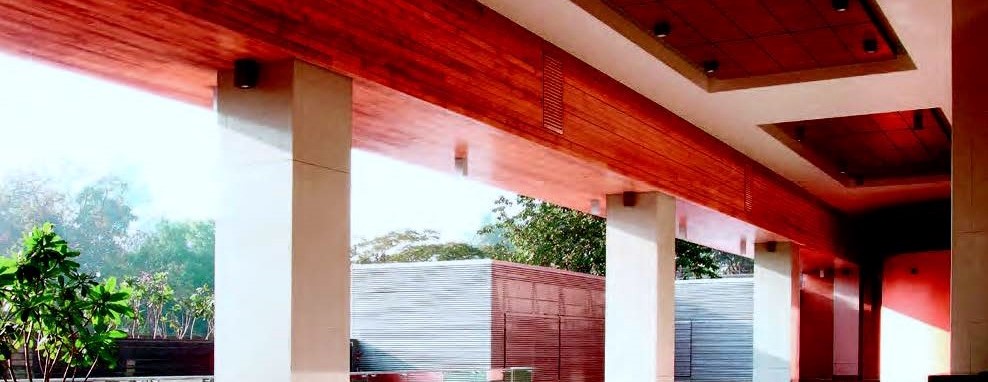
A promise delivered - Teknos coated Accoya in India
In early 2010 Teknos was approached by Mr Anuj Divanji of Ritikaawood in India regarding the possibility of supplying an Industrial Wood coating system for a project he was working on. He wanted to supply factory coated timber cladding to a prestigious construction contract in Pune. The building would be the head office for the Abil group in a prime location in Pune, so performance was very important.
“It was to be the first project in India for factory coated cladding,” says Mark Hubbert, Business Support and Development Manager Teknos. “It also was the first project for Ritikaawood, the first project in India for Accoya and the first project in India for Teknos. So it initiated a lot of technical discussions.”
The challenges range from average rainfalls between 800 to 3000 mm per year, two to three times the solar radiation of Northern Europe and very high traffic and dust pollution. Teknos’ testing of the AQUATOP 2600 system and Accoya gave a very good indication that the products would perform in this climate and the project was agreed.
In September 2010, after visiting India to help set up the application area in the new Ritikaa factory and train the spray applicators, Teknos coated Ritikaawood Accoya cladding boards were supplied to the construction site. The concern locally remained that coated timber does not perform well in external exposure conditions in India and recoating after 8 to 12 months is the maximum expectation. The Teknos and Ritikaa promise was that time would be significantly extended due to a combination of a highly durable coating system and the excellent dimensional stability of Accoya.
Some areas of mechanical damage were evident during the inspection but even in these areas, there is no progressive coating breakdown occurring due to moisture ingress or degradation of the Accoya. The original translucent colour continues to perform very well with very little difference in colour shade between the boards exposed to the highest amounts of solar energy and those area shaded from the sun. All of these issues would be expected with traditional Indian coating systems and timber substrates.
“After more than three years we can clearly state that the promise has been delivered,” concludes Mark Hubbert.